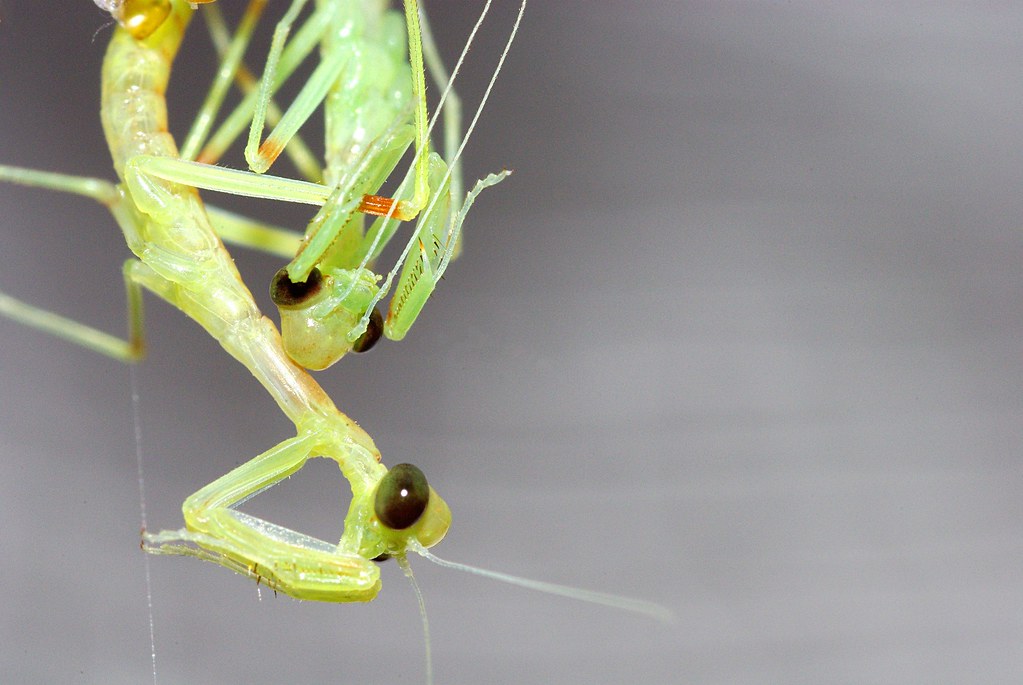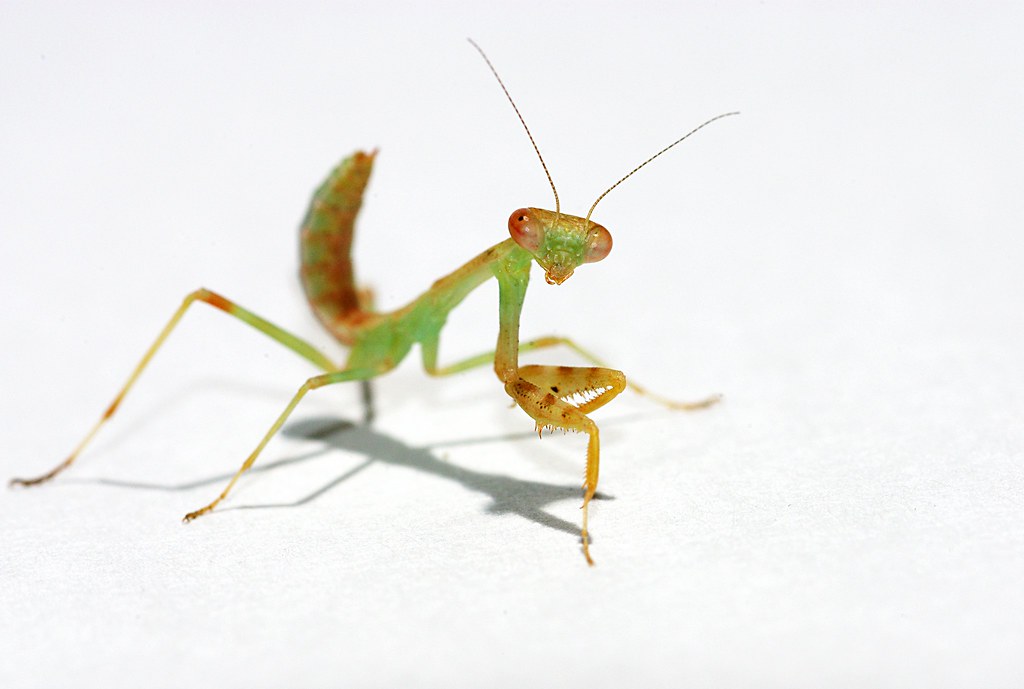All that advanced stuff confused me, and it's three in the afternoon!This is how it goes. The emergence of the mantis nymph tends to differ from that of other insects, largely due to the ootheca and the embryonic mantis's need to escape it. We shall consider one egg.
The embryo develops inside an embryonic cuticle within the chorion (egg shell) The anterior end is covered by a cephalic[head region] cap which is thought to be involved in its emergence from the ooth. Immediately prior to hatching, it is called a pronymph. At hatching, the pronymph breaks through the chorion and wriggles its way to the surface of the ooth. I am seriously not interested in starting any kind of debate here, and it is true that when the pronymph emerges, it casts off the embryonic cuticle with its cephalic cap and ventral rod(cf), but the "strings" that you see are not the exuviae, but "hatching filaments" produced by the embryonic cercus (
http://www3.interscience.wiley.com/journal/109917798/abstract?CRETRY=1&SRETRY=0) Again, note that the chitin here is not exuvial Chitin is secreted by insects under conditions that have nothing to do with ecdesis, such as the formation of the hypertrophic matrix. I am sure that Christian and a few others could greatly enhance this description, but it will do for now.
So there you have it. Egg, pronymph, first instar (L1) nymph. And away you go! Post or Email me if anything is unclear.

























































